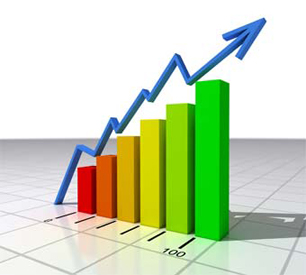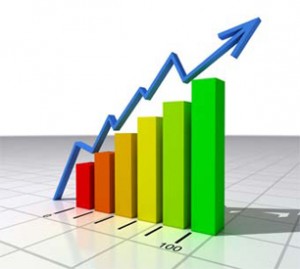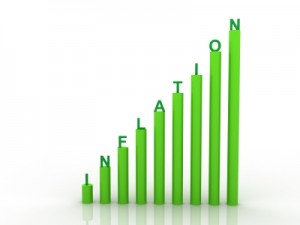- Price Statistics
- Price statistics available in Indian official publications may be discussed under three heads, viz., wholesale prices, consumer and retail prices, and other prices (such as farm prices, control prices, spot prices of gold and silver, security prices, etc.).
- The important agencies engaged in the collection and publication of price data on a national scale are: DES, Office of the Economic Adviser, Ministry of Industry (EA-Ind), Labour Bureau, NSSO). The DES collects price data through primary agencies nominated by State Governments and includes wholesale, retail, farm (harvest) and rural retail prices of agricultural commodities. The Office of the Economic Adviser collected weekly wholesale prices for compiling index numbers of wholesale prices.
- The Labour Bureau compiles two series of consumer price index numbers, one relating to industrial workers and the other covering agricultural labour. The Labour Bureau also depends for its retail price data relating to its consumer price index numbers on the State agencies while the rural retail prices are obtained from the NSSO, which collects price data from 419 villages spread all over the country.
- The NSSO also collects prices of 180articles consumed by middle class families in 45 centres on a regular basis for the index numbers of urban, non-manual employees issued by the CSO.
- The DGCIS collected wholesale prices of 31 commodities, important from the point of view of foreign trade of India, from sources like Indian Chambers of Commerce and Trade Associations.
- The National Building Organisation collects quarterly retail prices in respect of 13 important building materials. Most of the States are also collecting price data issued by the State Statistical Bureaux. Commodity Development Directorates of the Ministry of Agriculture and Irrigation, Commodity Boards, certain organisations like Indian Bureau of mines, Coal Controller and other semi-government organisations also collect price data. Spot prices of gold and silver and security prices are being collected and issued by the Reserve Bank of India.
According to Indian Official Statistics, there are two types of prices:
- Wholesale prices
- Agricultural commodities
- The collection of data on agricultural commodities is done from different market centres under the supervision of the DES. The data are collected mainly through various primary agencies set up under the Marketing Intelligence Scheme of the DES. In a few cases Revenue and Civil Supplies Staff collect price data as part of their normal work. The prices are collected every Friday at places where markets are held daily.
- In cases where markets are held on specific days of the week, the prices relate to the nearest market day preceding Friday. The weekly price data for some of the important commodities (cereals, pulses, vegetables, fruits, etc.) for centres selected for collecting data for the DES are issued in the Weekly Bulletin of Agricultural Prices. The monthly prices (month-end prices) for a subset of commodities are issued in the Agricultural Situation in India (monthly). The Agricultural Prices in India (annual) publishes the wholesale prices (both monthly and annual) of 62 commodities for different centres collecting data for the State Governments.
- The States also give monthly, as well as average annual prices in their monthly and annual Abstract of Statistics. Besides, most of the States issue Weekly Bulletins of Prices.
- Non-agricultural commodities
- The prices of these commodities are required by the office of Economic Adviser for the computation of weekly wholesale price index in the publication Revised Index Numbers of Wholesale Prices in India (base 1981-82=100) published by EA-Ind. It contains index numbers of wholesale prices of 447 commodities classified according to the standard industrial classification and grouped under three main heads, viz. primary articles; fuel, power, light and lubricants, and manufactured articles.
- The price quotations are obtained from various official and non-official agencies (like the Chambers of Commerce, Commodity Boards etc.). The Government has introduced a new series of index numbers of wholesale prices with 1993-94 as base year as part of a move to make the inflation-measuring mechanism more realistic. The new series based on the S.R. Hashim committee report, was started from September, 1999.
- The monthly as well as annual prices are issued in the Statistical Abstract, India (annual). The monthly prices are the prices of the last week of the month and the annual are the average of monthly prices. At present, the Indian Trade Journal also publishes market quotations on certain days at certain important centres for 31 commercially important commodities, The Bulletin of Prices of Building Materials and Wage Rates of Building Labour, published half yearly by the National Building Organisation, give statistics of wholesale prices of building materials and wage rates for building for 35 selected centres.
- Retail prices
- While a scheme of collection of retail prices of essential commodities has been introduced recently in order to keep a watch on their price movements, retail price data have been collected since much earlier times by Central and State agencies for the construction of consumer price index numbers. The data is currently being compiled by the DES, the Labour Bureau, the NSSO, the BESs and the CSO.
- The DES collects retail prices of cereals, pulses, vegetables, vegetable oils, fresh and dry fruits, fish and eggs, livestock and its products. The weekly prices are published in the Bulletin Agricultural Prices (DES, weekly). Monthly (i.e. month-end) retail prices of these items prevailing at selected markets are published in the Agricultural Situation in India (DES, monthly). The Agricultural Prices in India (DES, annual) gives monthly retail prices (as prevailing on the last Friday of the month) for 38 selected commodities at selected centres in each State for the current and the preceding year.
- The Labour Bureau compiles two series of consumer price index numbers one relating to industrial workers and the other to agricultural labour. For the index numbers of industrial workers, it depends on State agencies (BESs or Labour Directorates), which collected retail price data from 140 markets serving the working class populations of 50 centres. For the other index number, the Labour Bureau depends on the NSSO, which collects data from 419 villages spread all over the country. The important publication in this regard is the Indian Labour Journal (LB, monthly) and Indian Labour Statistics (annual). The data published in the Journal include
- i. Average monthly consumer prices of selected items paid by working-class families at selected centres;
- ii. All-India and centre-specific consumer price indices for industrial workers (base 1982=100) for 70 centres (group-wise) since October 1988 based on a family budget survey conducted in 1981-82*.
- iii. State wise rural consumer prices of selected commodities consumed by agricultural workers; and
- iv. General as well as food group consumer price indices for the current and preceding months (base 1982=100).
- The NSSO has been collecting rural retail price data from village markets since the 5th round. In addition, the NSSO now collects prices of 180 articles consumed by middle-class families in 45 urban centres.
- Other prices
- These include farm harvest prices, harvest season prices, control price, spot prices of gold and silver, and security prices.
- By the farm harvest price of a commodity is meant the average wholesale price at which a commodity is disposed of by the producer to the trader at the village site during the period of 6 to 8 weeks after start of the harvest. Data on farm harvest prices are collected from a number of villages selected on a purposive basis through the primary agencies responsible for collection of agricultural statistics. These are published in the Indian Agricultural Price Statistics (DES, annual) and also in the Farm (Harvest) Prices of Principal crops in India (DES, quinquennial).
- Harvest season prices are wholesale prices during the harvesting season. These are taken to be the averages of weekly wholesale quotations taken during the harvesting period at important marketing centres adjoining the major producing area of each crop. The relevant data are collected through the branches of the State Bank of India and published in the Agricultural Situation in India (DES, annual).
Click here for government certification in Management
Click here for government certification in Accounting, Banking & Finance
Click here for government certification in Quality
 Brighten Your Career Path This Diwali - Invest in Yourself!
Brighten Your Career Path This Diwali - Invest in Yourself! 




3 Comments. Leave new
Well explained..
Cohesive work
(y)